Why do galaxies have black eyes?
If you ever saw a spiral galaxy where one side looked darker than another, prepare yourself: now we know why!
“With an eye made quiet by the power of harmony, and the deep power of joy, we see into the life of things.” –William Wordsworth
When you think about a spiral galaxy, you most likely think about the intricate structure of the arms themselves, lined with bright, blue stars, the lower densities in between them, and the bright, central bulge where the greatest concentration of stars live. As you move away from the center, towards the outskirts, the number of stars that you see drops precipitously, tapering off towards the empty abyss of intergalactic space.
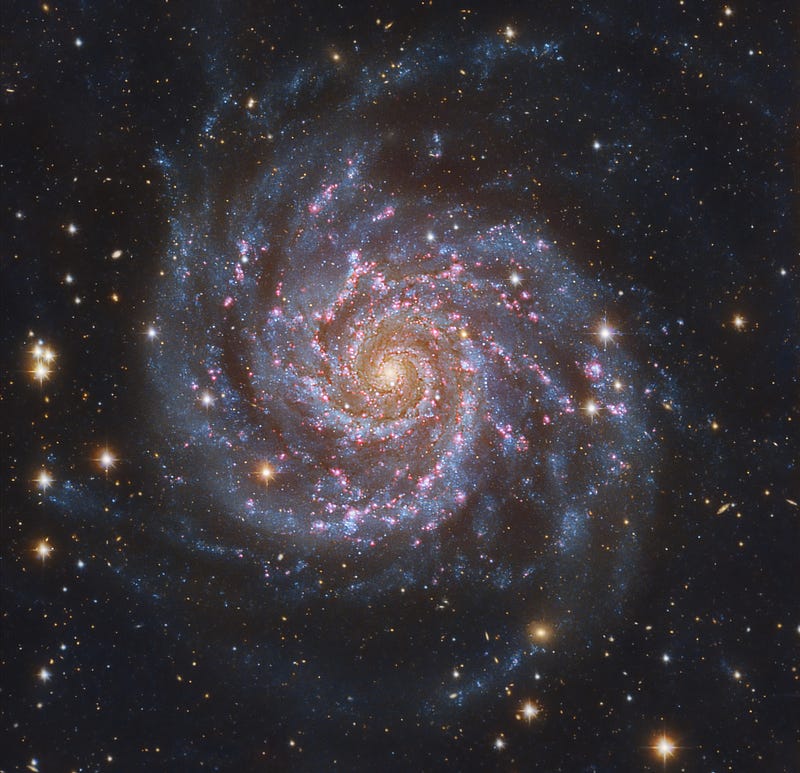
But if you’re looking at a spiral that isn’t directly face-on, but rather tilted, you’re very likely to notice another prominent feature: these dark features that obscure the light from stars that ought to be there. As we’ve come to understand the Universe better and better over time, we’ve learned what’s responsible for these features, cosmic dust.
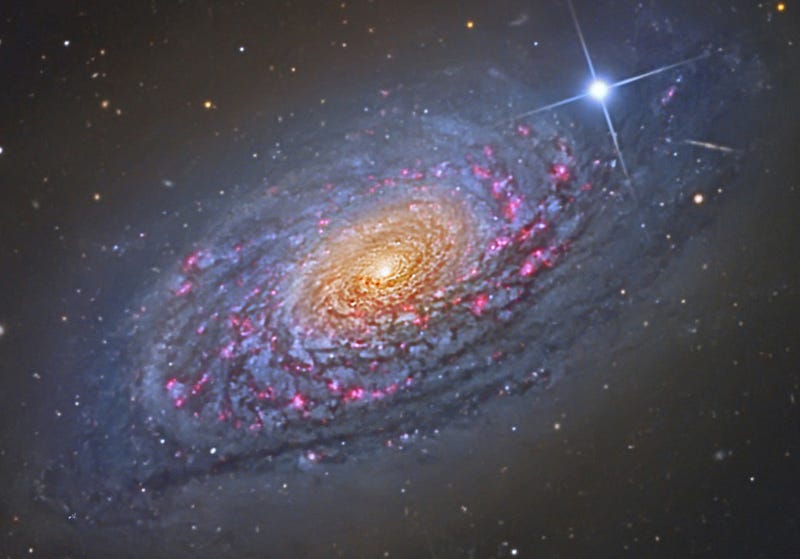
In any galaxy, it’s very difficult to map this dust directly, because we can only see a two-dimensional projection of a galaxy, while the dust is distributed throughout three dimensions. Too bad, because the closest large galaxy to us — Andromeda — is tilted at a large angle with respect to us, where some of the dust is closer to us and some of it is farther away.
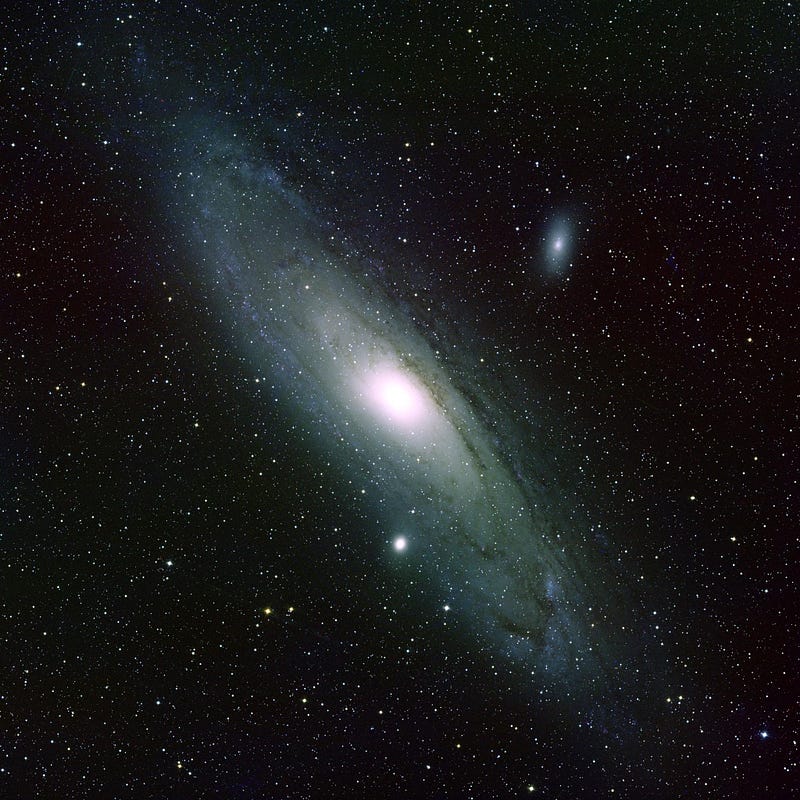
We’ve been able to construct great images of Andromeda in many different wavelengths thanks to our multitude of great observatories, including in the ultraviolet thanks to GALEX,
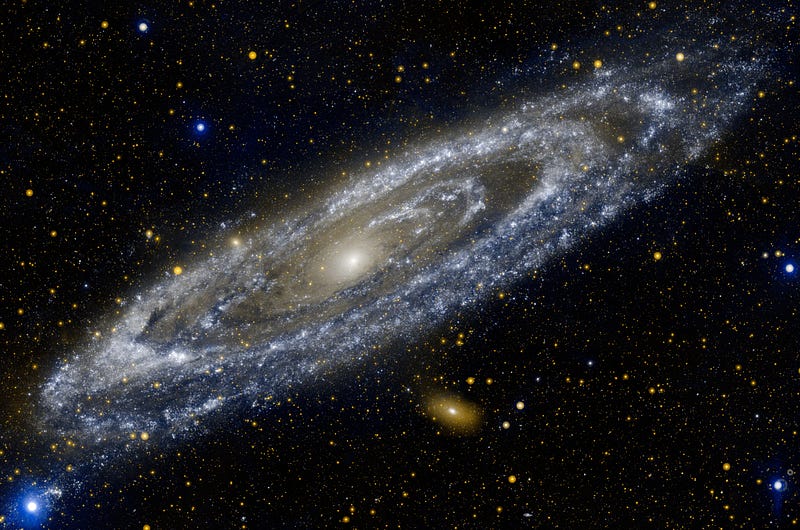
and in infrared thanks to spacecraft like Spitzer and WISE, the latter shown below.
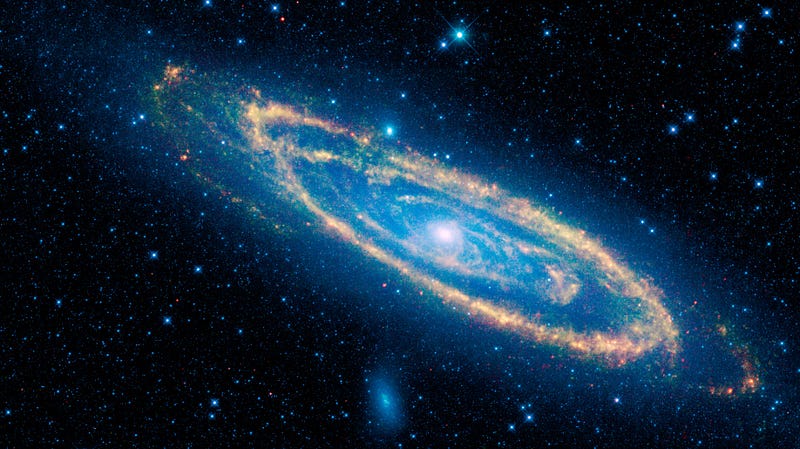
But while these are great for looking at different components of the galaxy like bright blue stars and neutral gas, the dust is trickier. But a new survey, the Panchromatic Hubble Andromeda Treasury (PHAT), has imaged about a third of the Andromeda galaxy at Hubble’s resolution. And it’s done this — for a huge region of space — in all the different wavelengths ranging from the near ultraviolet through the entire visible spectrum all the way into the near infrared.
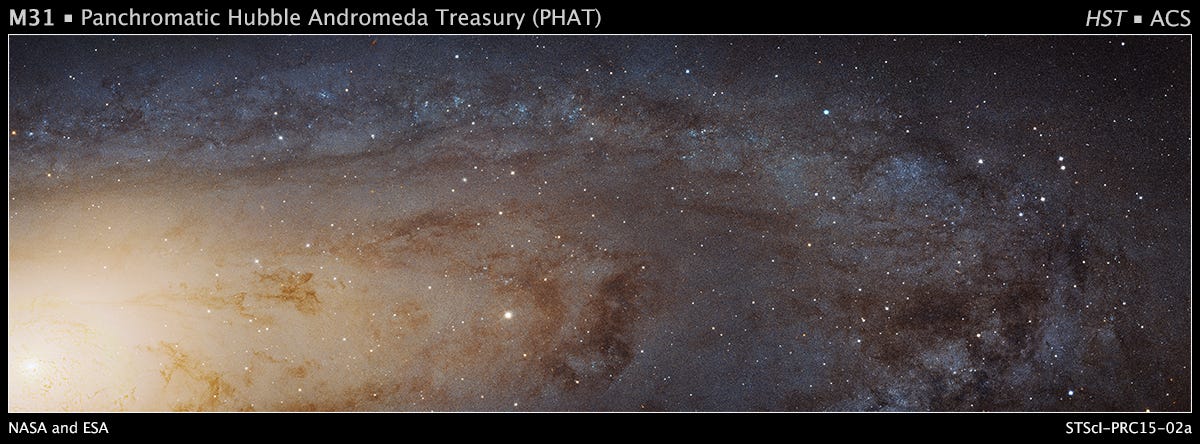
Why is this important for dust? Think about the kinds of dust you see here on Earth. These little fragments exist at a certain size, and in particular, at a size that’s sensitive to wavelengths of visible light. But this dust treats different wavelengths differently, just like our atmosphere does!
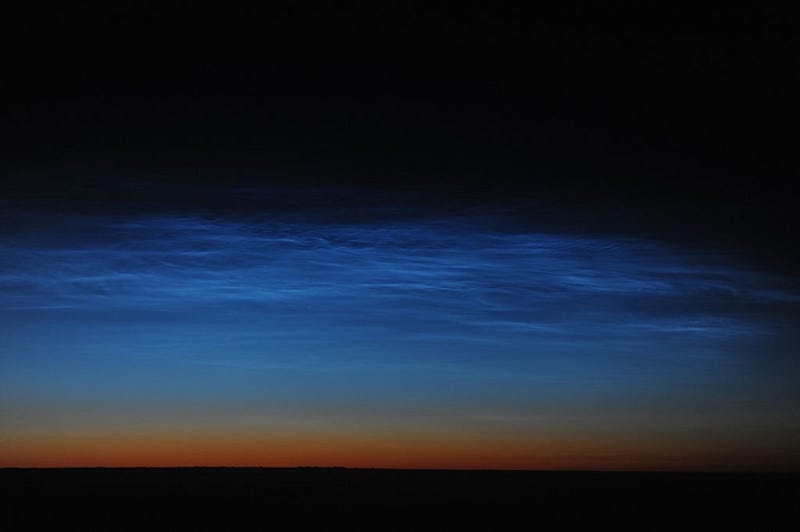
Here on Earth, the atoms and molecules in our atmosphere are more efficient at scattering away blue light, while they’re less efficient at scattering red light. This results in the sky appearing blue — because the blue light scatters from the atmosphere to our eyes — but also results in the Sun appearing redder at sunrise/sunset (and the Moon at moonrise/moonset), as that blue light gets scattered away, leaving more amounts of the red light around.
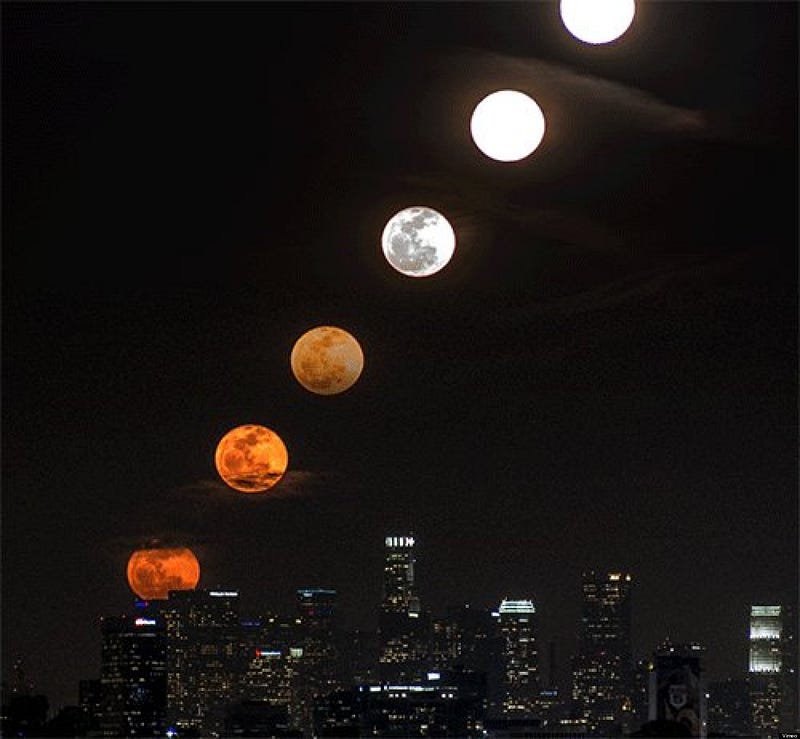
Well, dust works the same way in galaxies! If you have stars that live in front of the dust relative to you, the light will simply travel through space, to your eyes, and will appear to you the same way that it was emitted. But if you have stars that live behind either part or all of the dust in a galaxy, their light will be reddened before it reaches your eyes, something we see in dusty regions even of our own galaxy!
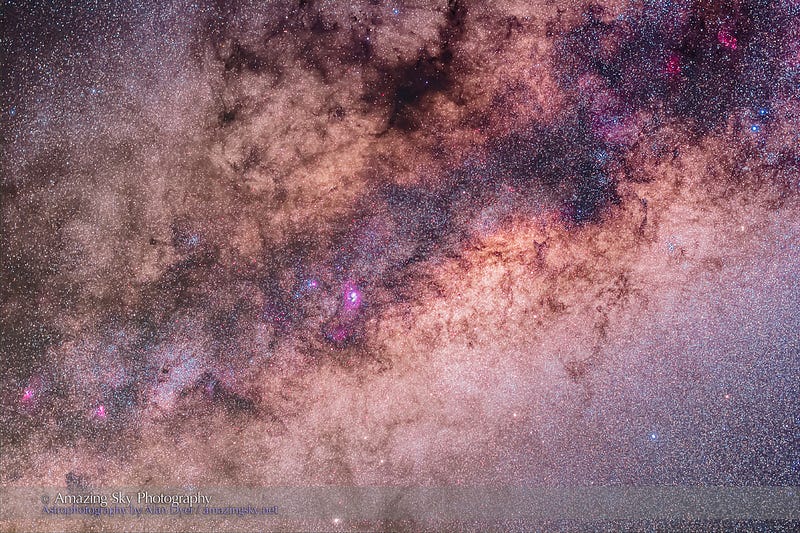
The reason the PHAT survey is so important is because, at Hubble resolutions, we can measure the properties of individual stars. In particular there are certain classes of stars that are known ot have very particular spectral properties, meaning that these stars emit light of different wavelengths in specific ratios relative to one another. Just by looking at the individual stars, we can determine whether it’s got the properties that tell us it’s in front of all the dust, or — if the light appears reddened — how much dust it’s behind!
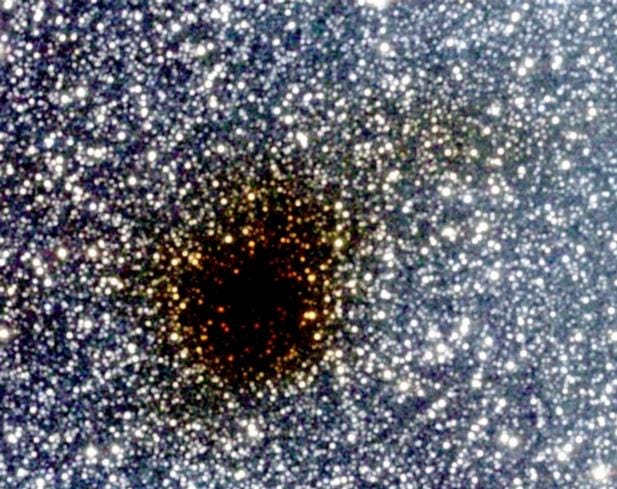
So what this allows us to do is reconstruct a map of the dust in Andromeda, the very first time we can build an accurate three-dimensional map of dust in a galaxy.
But there’s an amazing thing that we find, that you might not expect at first glance. Andromeda, you see, is tilted with respect to our eyes. And what that means is that half of the galaxy is tipped towards us, while half is tipped away from us, just like our planet is tipped on its axis right now with one pole pointing towards the Sun and the other pole tipped away from it. The dust, as you might have guessed, preferentially lives right in the middle of the plane of Andromeda. This part you would have guessed, because if you looked at an edge-on spiral galaxy, this is exactly where the dust pretty much always lives.
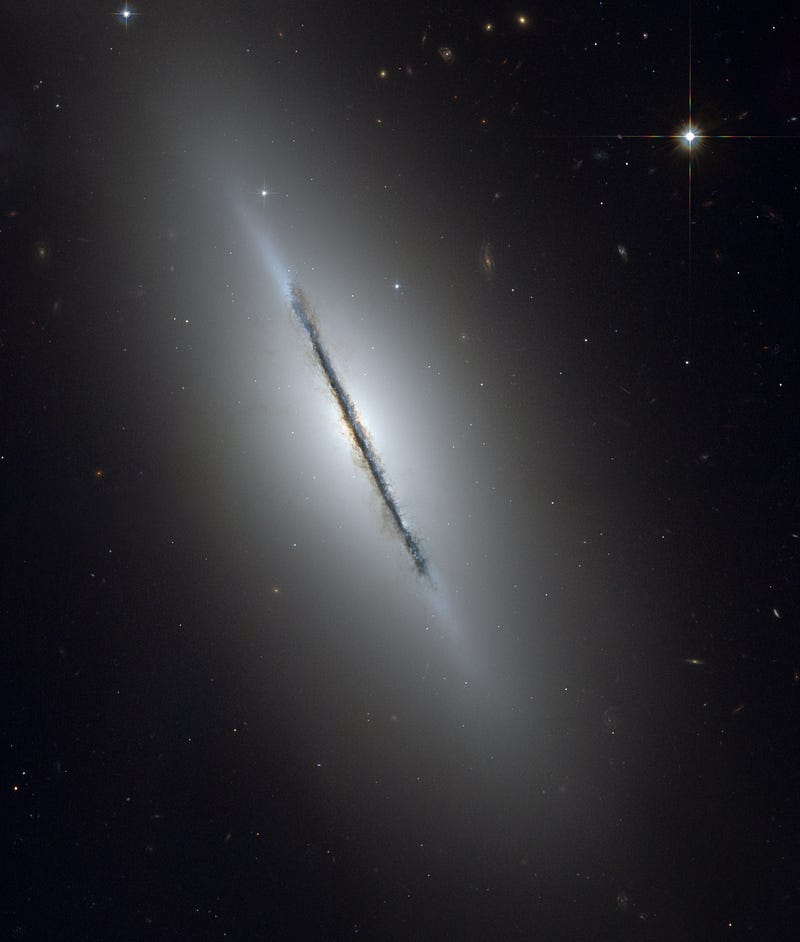
But what might surprise you is that on the side of the galaxy that’s tipped towards us, the stars look less red and the galaxy looks less dusty, while for the side that’s tipped away from us, the stars look redder and the galaxy looks like there’s more light-blocking dust in there!
This sure does sound weird, doesn’t it?
Wouldn’t you expect that, no matter where you looked in the galaxy, you’d see the same amount of dust and the same amount of reddening? You would, actually, but only if the galaxy had the same amount of stars throughout it.
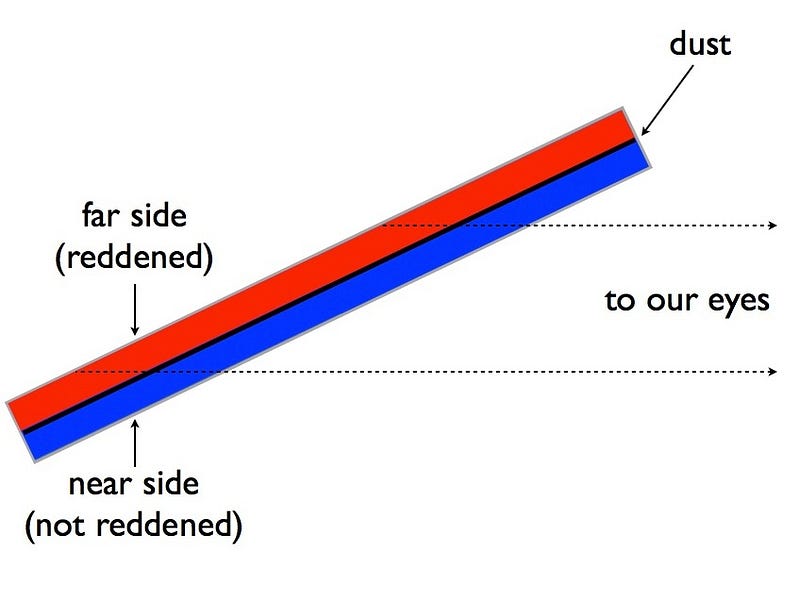
The stars coming from behind the dust plane and in front of the dust plane would be equal in number, if this were how stars in a galaxy worked.
But we know, remember, that real galaxies aren’t like that: they’ve got more stars towards the center and fewer stars towards the outskirts.
So when you look at the side of a galaxy that’s tipped toward you, which side has a greater density of stars: the side in front of the dust or the side behind the dust?
Similarly, when you look at the side that’s tipped away from you, which side has a greater density there: the side towards you or the side away from you?
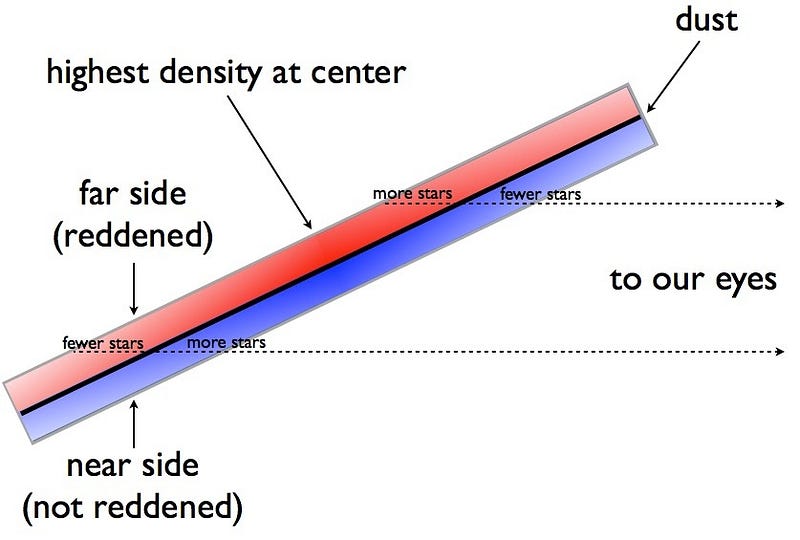
Take a close look: when a galaxy is tipped towards you, there are more stars in that galaxy that are behind the center of the galaxy’s plane, and so more stars should appear redder and the galaxy should appear dustier.
And when a galaxy is tipped away from you, there are more stars in front of the galaxy’s plane, and so more stars appear at their normal color, meaning the galaxy should appear less dusty.
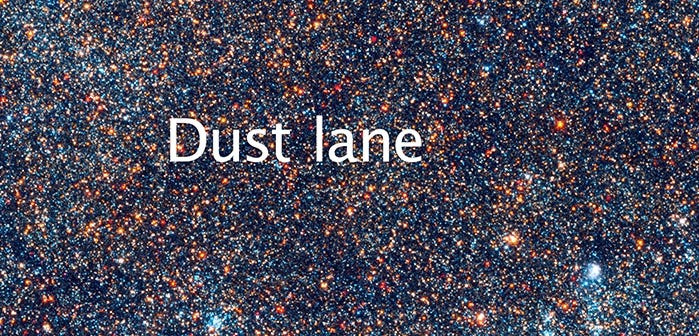
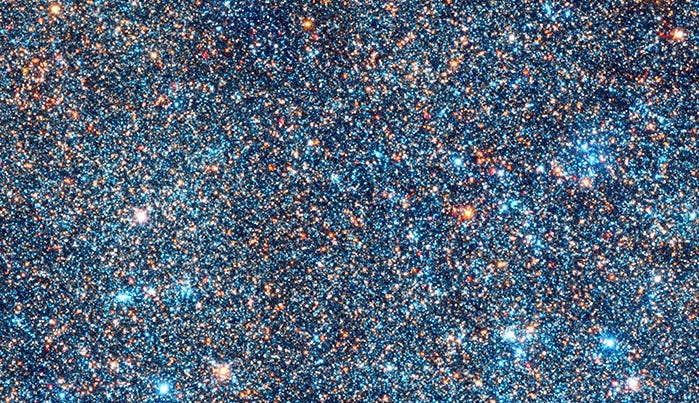
We had seen the dust effect before, but had never been able to measure the reddening of the individual stars. Thanks to the PHAT survey, we’ve done exactly that, and now we know for sure. We’ve actually been able to construct a 3D dust map, and this picture is exactly the one that describes what’s happening to the stars inside tilted spirals.
Galaxies appear dusty on one side not because one side is dustier than the other, but because there are more stars that appear reddened (or rendered totally invisible) by the dust relative to our line-of-sight. If we could see these galaxies from the other side, their dust would look flipped!
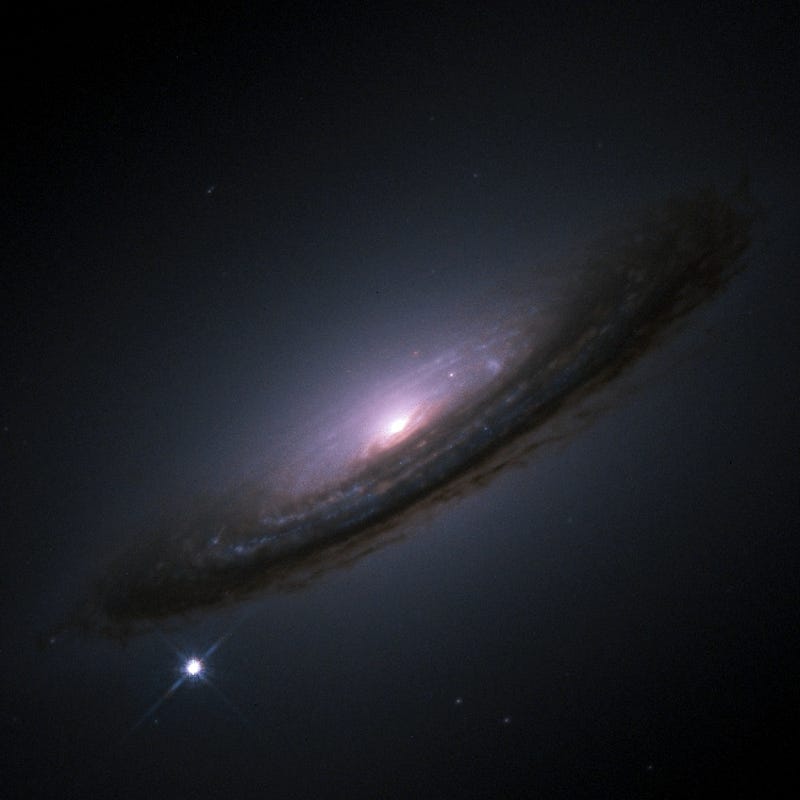
And that’s why galaxies — in the most extreme cases — have black eyes. Another great story from the American Astronomical Society’s annual meeting, and a special thanks to Julianne Dalcanton and Pauline Barmby for going into extraordinary detail on this with me!
Leave your comments at the Starts With A Bang forum at Scienceblogs!





